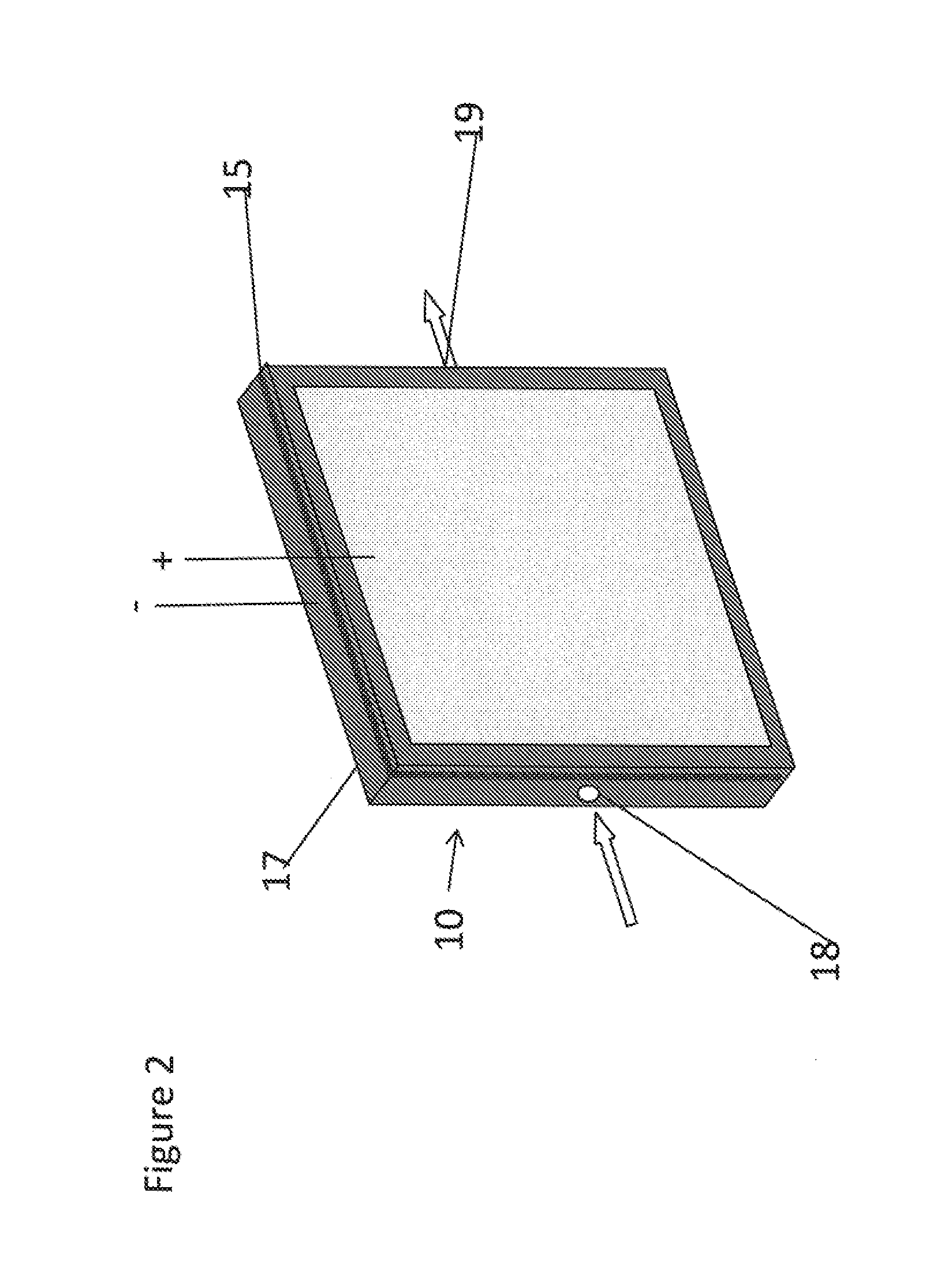High efficiency microbial fuel cell
a fuel cell, high-efficiency technology, applied in the direction of fuel cell details, cell components, electrochemical generators, etc., can solve the problems of reducing power generation, reducing voltage efficiency, and acidification of the anode compartment and a ph gradient between the compartments, so as to facilitate efficient energy production, facilitate fluid use, and low conductivity
- Summary
- Abstract
- Description
- Claims
- Application Information
AI Technical Summary
Benefits of technology
Problems solved by technology
Method used
Image
Examples
specific embodiments of invention
[0068]The following examples are included for illustrative purposes only and are not intended to limit the scope of the invention. Unless otherwise stated, all parts and percentages are by weight.
[0069]Assembly of Microbial Fuel Cell
[0070]A chamber 1.5 cm wide, about 4 cm long and 0.45 cm deep is machined in a 3 cm×6 cm×0.9 cm piece Lucite. Ports are drilled into the piece to serve as inlet and outlet ports for solution flow. Two small holes are drilled in the bottom of the chamber for wire leads. One longer wire is used as the electron conduit and another shorter wire is used as an unloaded voltage probe. The lead wires are sealed into place using epoxy. A piece of carbon felt 1.5 cm×3.0 cm×0.45 cm is placed in the chamber. An anion exchange membrane, a film prepared from a polyolefin binder and ground anion exchange resin is placed over the felt, then a cathode consisting of Pt / C on carbon paper support is cut to 1.5 cm×3 cm and placed on the membrane opposite the carbon felt anod...
PUM
| Property | Measurement | Unit |
|---|---|---|
| thickness | aaaaa | aaaaa |
| voltage | aaaaa | aaaaa |
| voltage | aaaaa | aaaaa |
Abstract
Description
Claims
Application Information
 Login to View More
Login to View More - R&D
- Intellectual Property
- Life Sciences
- Materials
- Tech Scout
- Unparalleled Data Quality
- Higher Quality Content
- 60% Fewer Hallucinations
Browse by: Latest US Patents, China's latest patents, Technical Efficacy Thesaurus, Application Domain, Technology Topic, Popular Technical Reports.
© 2025 PatSnap. All rights reserved.Legal|Privacy policy|Modern Slavery Act Transparency Statement|Sitemap|About US| Contact US: help@patsnap.com



